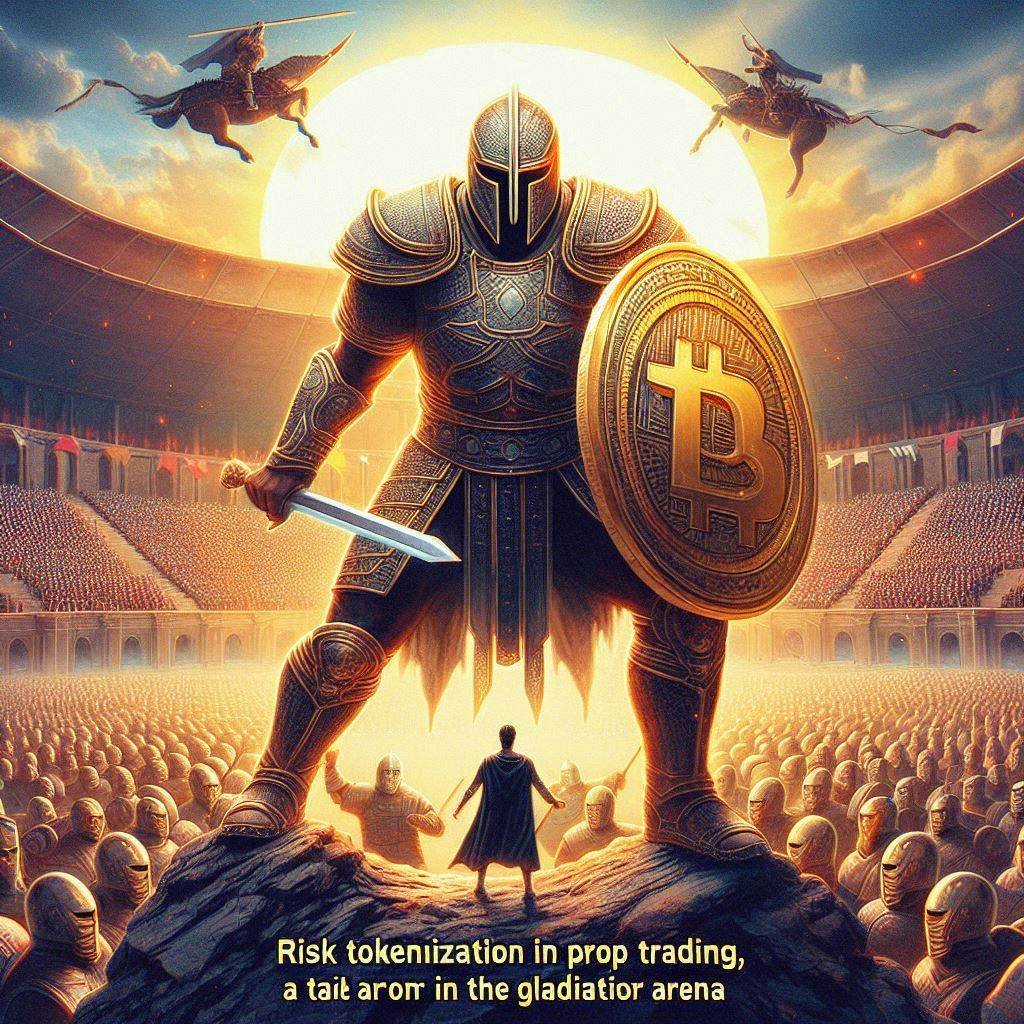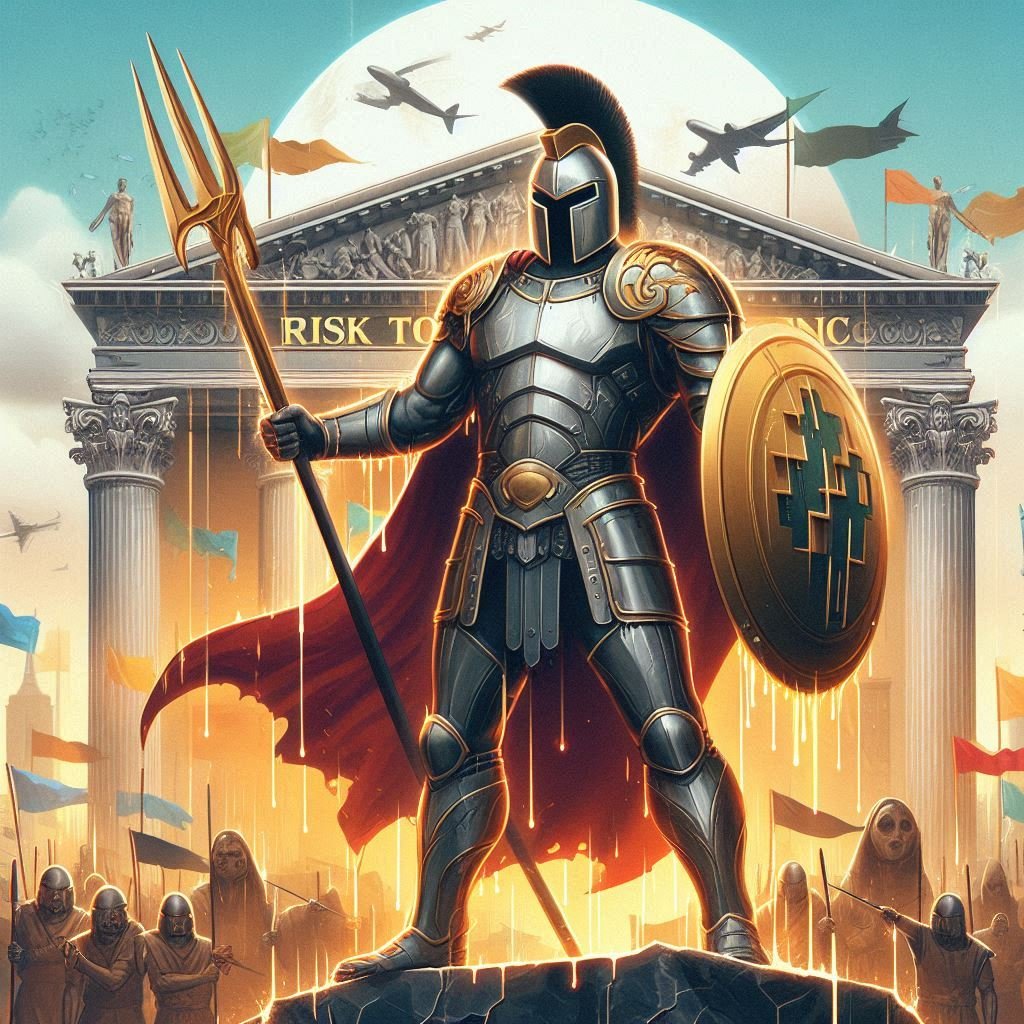Imagine prop trading as an elite gladiator arena, where skilled fighters (traders) enter armed with strategy, instincts, and nerves of steel. Their goal? To win battles using capital borrowed from the kingdom (the prop firm) — not their own gold. But in this arena, the enemies are not swords or spears — they are volatile markets, unexpected news, and ruthless drawdowns.

Now, picture that instead of walking in with bare chests and blind courage, these traders are suited up with digitally forged armor pieces, each one representing a specific type of risk — like a shield for market risk, a helmet for liquidity risk, and greaves for leverage risk. These armor pieces are not physical — they are blockchain-based tokens, engineered through a new frontier called Risk Tokenization.
So what is Risk Tokenization?
At its core, Risk Tokenization means breaking down complex trading risks into quantifiable, tradeable, and transparent digital tokens. It’s like taking the invisible enemy — risk — and giving it shape, weight, and a value that can be tracked, traded, or hedged. This process isn’t just symbolic; it is revolutionary in prop trading, where the relationship between traders and capital is built on balancing performance and peril.

Let’s return to our arena.
Each trader in a prop trading firm operates under a set of capital constraints and drawdown limits. Traditionally, these are blunt tools — like a referee shouting warnings from afar. But with Risk Tokenization, these risk thresholds can become programmable smart contracts, embedded within the trader’s digital armor.
For example, a trader might receive “Volatility Risk Tokens” when entering a high-beta market like crypto. These tokens can track exposure, adapt limits dynamically, and even alert the firm if the trader’s behavior suggests potential meltdown. The firm, acting as the empire funding these gladiators, can monitor risk in real time, with every token broadcasting signals through the blockchain coliseum.
But there’s more.
Risk Tokenization also brings interoperability and liquidity into the game. Suppose a trader excels at managing interest rate risk — they can “sell” or “stake” those risk tokens to prove their credentials or gain extra capital in that niche. These tokens become a reputation layer for prop traders across platforms.
In a futuristic vision, we might see marketplaces for risk tokens, where traders buy, sell, or even rent specific risk slices — much like insurance. A novice trader might offload their drawdown risk token to a seasoned risk manager in exchange for a portion of the profits. This turns prop trading into a modular, collaborative ecosystem, rather than a solo war of attrition.
Moreover, for the prop firm itself, Risk Tokenization offers unprecedented clarity and scalability. Risk can be fractionalized, redistributed, or dynamically priced using AI — allowing the firm to fund more traders with smarter capital controls. It’s like upgrading from medieval scrolls to live holographic dashboards showing who is at risk, where, and how severely.
In the end, Risk Tokenization isn’t just a tech upgrade — it’s a philosophical shift in prop trading. It reframes risk not as an unseen ghost to fear, but as a tangible asset to track, manage, and even monetize.
It brings the invisible world of risk into the visible spectrum of digital finance.
And in doing so, it arms the brave warriors of prop trading with smarter shields — not just to survive the markets, but to master them.




